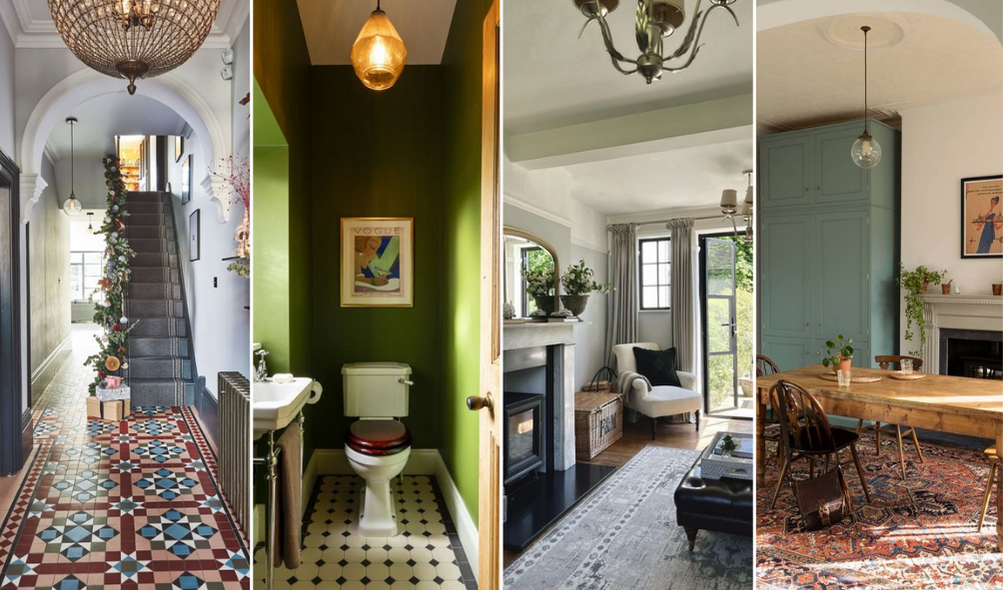
FAQ About Edwardian House Decor

How did the Edwardian era embrace the use of decorative tiles?
The Edwardian era, which spanned from 1901 to 1910, witnessed a significant embrace of decorative tiles in interior design. The use of tiles during this period was influenced by various design movements, including the Arts and Crafts movement, as well as a broader shift towards simpler, cleaner aesthetics compared to the ornate styles of the Victorian era. Decorative tiles were employed in various areas of Edwardian homes, contributing to both functional and aesthetic aspects of interior design.
- Fireplace Surrounds: Edwardian homes often featured decorative tiles as part of fireplace surrounds. These tiles, known as fireplace tiles or hearth tiles, were positioned around the opening of the fireplace. They came in various designs, including floral motifs, geometric patterns, and Art Nouveau-inspired themes.
- Kitchen Backsplashes: In the kitchen, decorative tiles were commonly used as backsplashes. These tiles not only served a practical purpose by protecting the wall from splashes and stains but also added decorative elements to the kitchen space. Tiles with simple patterns or motifs were popular choices.
- Bathrooms: Edwardian bathrooms often showcased decorative tiles as a key design element. Tiled wainscoting, especially in white or light colors, was a common feature. Tile patterns ranged from geometric designs to floral motifs, contributing to the overall clean and hygienic aesthetic that characterized Edwardian bathrooms.
- Flooring: Decorative tiles were used for flooring in various areas of the home, including entryways, hallways, and bathrooms. Geometric patterns, checkerboard layouts, and intricate tile designs were popular choices, especially in spaces where durability and ease of cleaning were essential.
- Stair Risers: In grander homes with staircases, decorative tiles were sometimes used on stair risers. This added a touch of ornamentation to the staircase, transforming it into a focal point. Tiles with repeating patterns or motifs were often selected for this purpose.
- Vestibules and Entryways: Tiled vestibules and entryways were common in Edwardian homes. These areas featured decorative tiles with intricate patterns or mosaic designs. The use of tiles in entryways was both functional and decorative, providing a durable surface for high-traffic areas.
- Art Nouveau Influence: The Art Nouveau movement, which was prominent during the Edwardian era, greatly influenced decorative tile designs. Art Nouveau tiles often featured flowing lines, floral motifs, and nature-inspired patterns. These tiles were used in various applications, including fireplaces, bathrooms, and as standalone decorative pieces.
- Furniture Accents: While not as common as in other applications, decorative tiles were occasionally used as accents on furniture. This could include tiles incorporated into the design of tabletops, cabinet doors, or other furniture pieces.
- Botanical and Natural Motifs: Many decorative tiles during the Edwardian era featured botanical and natural motifs, aligning with the prevailing aesthetic of the time. Flowers, leaves, and vines were popular design elements, reflecting a connection to the natural world.
- Craftsmanship and Hand-Painted Tiles: Handcrafted and hand-painted tiles were valued during the Edwardian era for their craftsmanship and uniqueness. Tiles with intricate hand-painted designs or relief patterns added an artisanal touch to interiors.
- Tile Patterns: The Edwardian era embraced a variety of tile patterns, including checkerboard, herringbone, and parquet layouts. These patterns added visual interest and complexity to the design of floors and walls.
